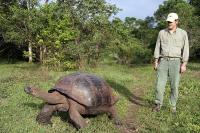
There are 4 islands with permanent settlements: Santa Cruz, San Cristóbal, Isabela and Floreana (in decending population order). Santa Cruz, San Cristóbal and Isabela have airports (the former's runways are on Baltra island, originally a US air base and linked to Santa Cruz via a ferry).
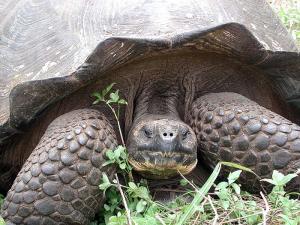
Santa Cruz (Indefatigable)
Santa Cruz has an incredible array of ecosystems so there is a lot to see including tidal lagoons, ponds, lava flows, cactus forests, cloud forests, beaches, mangroves and cliffs and it is home to varied wildlife and endemic species. Puerto Ayora, the island's administrative centre, is a bustling and lively town.
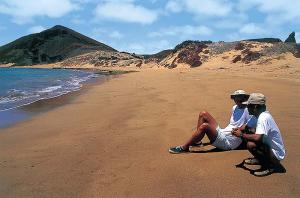
Floreana (Charles)
On the north coast of Floreana island is the only village (officially called Puerto Velasco Ibarra) with a military base, a church, pier, medical clinic for the hundred or so inhabitants, a couple of stores and a few scattered houses. The Ritter and Wittmer families were the first permanent inhabitants (the Wittmers arrived in 1929), and several books have been written that describe their hardships and adventures. Before this the island had been a penal colony in the 19th century, and before that a refuge for pirates raiding the Spanish merchantmen as they sailed from Peru to Panama with their colonial riches. In the centre of the island, which is lower and therefore drier than either Santa Cruz or Isabela, are agricultural lands and the village’s only water source (via a 1¬inch PVC pipe!). An area of lava rock formations that forms natural walls and corridors was fashioned by the pirates into crude living accommodation and is a popular destination for visitors. There is also a release pen for captive-bred Floreana tortoises.
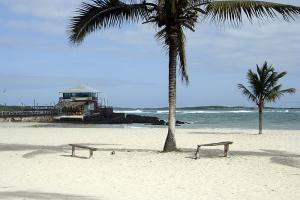
Isabela (Albermarle)
Isabela is the largest of the Galapagos islands, covering 58% (46,000 km2) of the total land area, but with just 2,500 inhabitants in and around the sleepy town of Puerto Villamil. First settled in 1897 (Antonio Gil’s descendents still live here), the island was a US air base during the Second World War, then a penal colony. There are several small hotels and guest houses and a fine sandy beach (perfect for families).
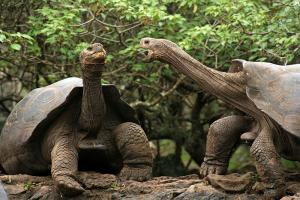
San Cristóbal (Chatham)
San Cristóbal is the easternmost island in the Galapagos and its town, Puerto Baquerizo Moreno, is the islands' capital. El Junco lagoon, a crater lake 700m above sea level, was the only permanent source of fresh water in the archipelago and San Cristóbal was therefore one of the first islands to be settled. Agriculture was the primary focus for most residents, until a penal colony was built in 1880. Today, San Cristóbal has the second largest population of all the islands with approximately 5,400 residents, the majority of whom make their living in government, tourism or fishing.

 The inhabited islands
The inhabited islands